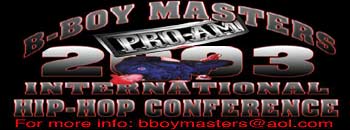


























































JOHANNESBURG,
Dec 17 (IPS)
South Africa's Apartheid Museum has opened at Gold Reef city in Johannesburg
bringing with it memories and facts of those who lived through the struggle
to freedom.
Sitting on a bench - branded with the word - ''Europeans only'' - the museum
radiates a sense of immense power symbolising the oppressive regime, which collapsed
in 1994.
The first building is a solid square with virtually no windows. Built of raw
concrete it stands in the harsh sunlight as a symbol of the uncompromising Apartheid
state.
Seven strong pillars, representing the seven corners of the country's constitution,
stand in front of the entrance.
Each enhances the overall feeling of immense strength of the past against a
backdrop of the mine dumps and Johannesburg City centre. But it is more than
just a museum - from the moment a visitor steps in front of the prison-type
solid building it demands his or her participation.
The entrance brings with it the experience of what it was like to live in the
apartheid era. Each visitor is handed a ticket with the words ''white'' or ''non-white''
that dictates the visitor's journey through the museum.
Entering the wall of ''Classification'', a visitor is bombarded with blown up
'Dompasses' and ID books that depict the people according to race. The museum
captures the separateness of the different races through the use of steel cages.
The dompasses are hung in huge steel structures while the European ID's are
merely housed in structures, with coloureds (people of mixed races), Indians
and Chinese thrown in the middle.
The cages with apartheid signs like ''Taxi ranks for whites only'' hanging overhead
is claustrophobic enhancing the feeling of oppression.
There is a separate exit for white visitors where they walk on a ramp above
the non-whites coming out on a lower level.
At this point, visitors experience the reality of physical separation.
Walking up a ramp enclosed by a huge wall (made of fenced cages filled with
rocks) depicts the migration of people to the Witwatersrand area of Johannesburg.
Double mirrors placed randomly on this ramp with photographs of a variety of
people create a feeling of a crowd. There are also alcoves in the red brick
building with paintings showing common origins, giving the impression of life
before the gold rush in South Africa.
But as a visitor walks further, the path becomes narrower reinforcing the feeling
of the reality of apartheid. The top of the ramp opens out onto the majestic
Johannesburg skyline creating the sense of journeying to the place of gold.
The museum works as a maze with a spiral staircase leading to the main reception
area, giving the impression of movement and distance. Most areas have an attendant
who briefly takes visitors through their section, explaining the relevance of
the displays.
Human experience is displayed on television screens that are mounted in steel
cages. The multimedia approach is further enhanced by each television feeding
into a sound dome giving the viewer an intimate look into the lives of black
people.
The sense of separateness continues with the Voortrekker (the 'Great Trek' by
Afrikaners) on one side, and the ruling African National Congress's birth and
growth on the other.
Dramatically placed on a wall is all the apartheid laws implemented in South
Africa. Looking at the names create a sense of detachment to the emotional and
psychological damage these laws had on non-white people.
Another dramatic feature is a room with 131 nooses hanging from a roof representing
the names of those who died in detention.
Bringing the experience of 'being in detention' to life is Dawn Elliot, a former
prisoner of the state. She takes visitors through solitary confinement and what
it was like to be a high school student fighting for freedom. She locks visitors
in a replica of a prison cell, slams the door, calling out: ''See you tomorrow!''
The 1960 Sharpville student unrest is almost poetically shown on televisions
in a semicircle - mounted along a wall - where video footage of the massacre
tells the truth showing the atrocities of that day.
A cinema screen with testimonies of people fighting in the eighties leaves one
sick with the brutal treatment of people by the police during the state of emergency.
Having gone through the time since 1948 it is hard to take all the factual information
in but a visitor walks out feeling free after going through the democratic elections
with life-size queues made-up of photographs of smiling people.
Overhead skylights work to create an image of walking into the light - leaving
the dark days behind.
On one wall is a display of guns, Ak47s' but lying underneath is a pile of metal
putting across the end of violence.
Still a work in progress, the museum promises more truth, criticism and reconciliation
for all those who step through its doors.
Mounted above a pool of water at the entrance of the Apartheid Museum are the
words of former South African President Nelson Mandela:
''To be free is not merely to cast off ones chains but to live in a way that
respects and enhances the freedom of others.''









